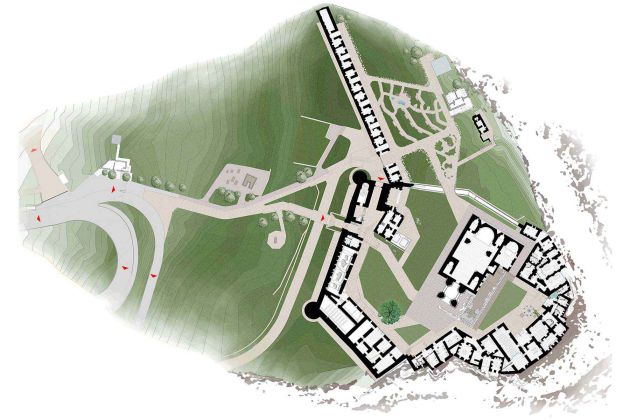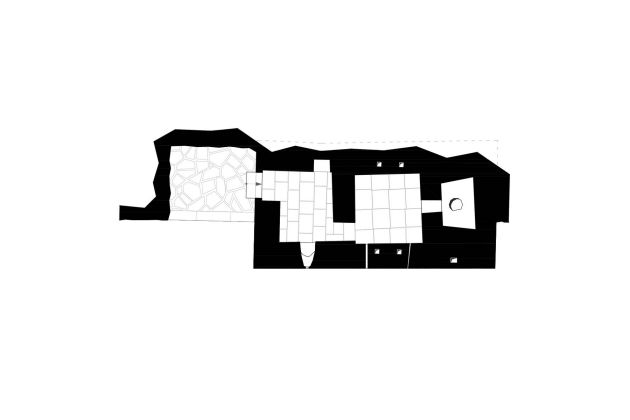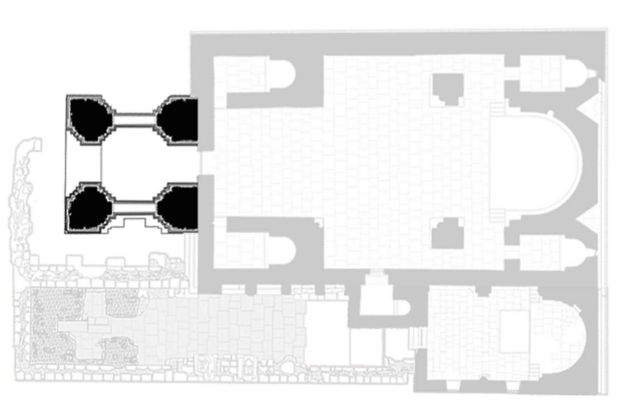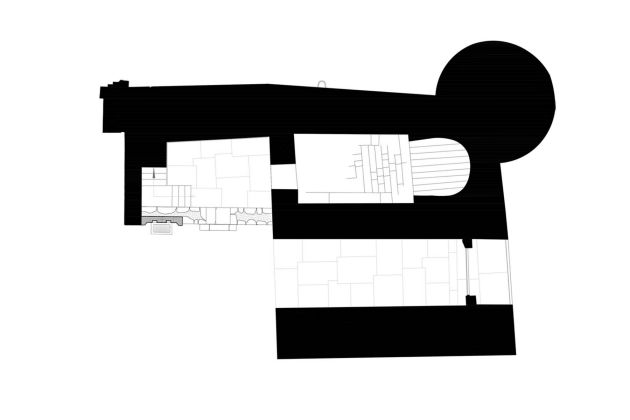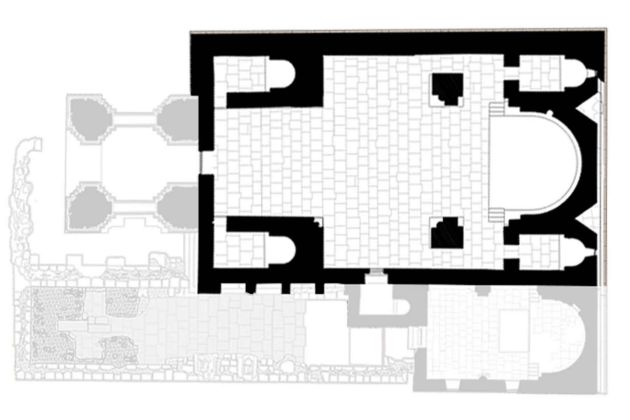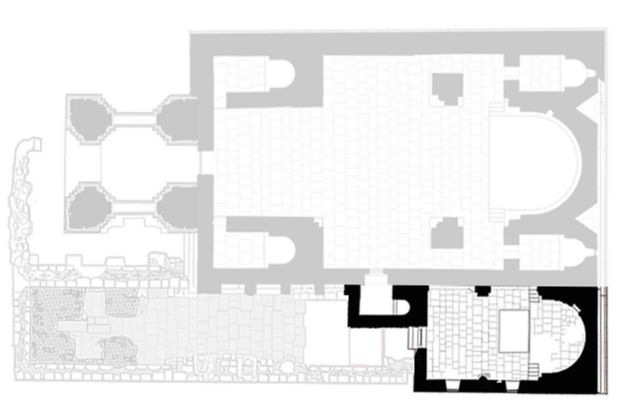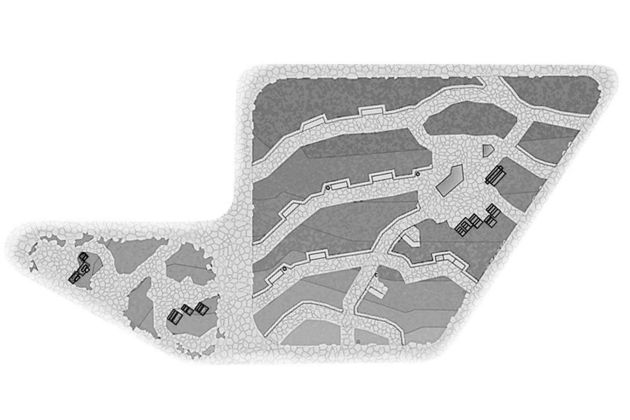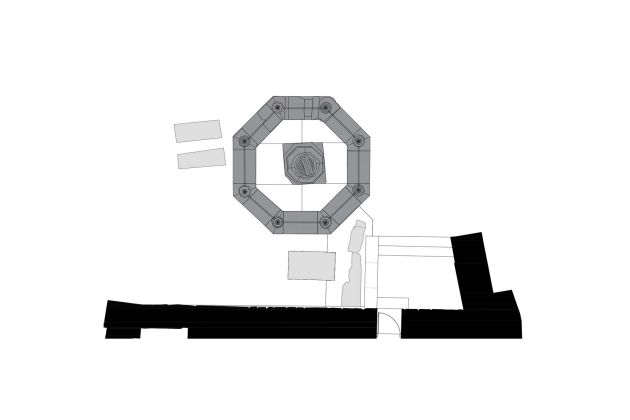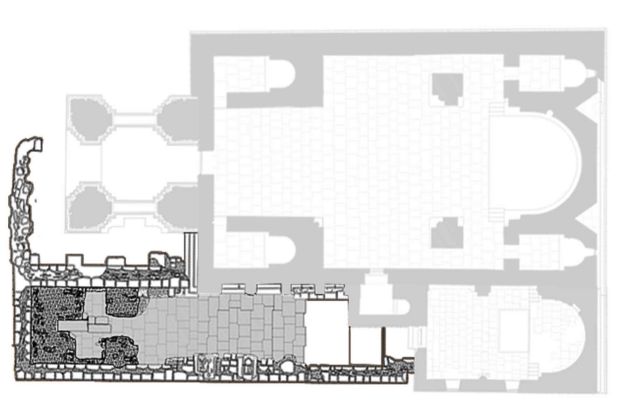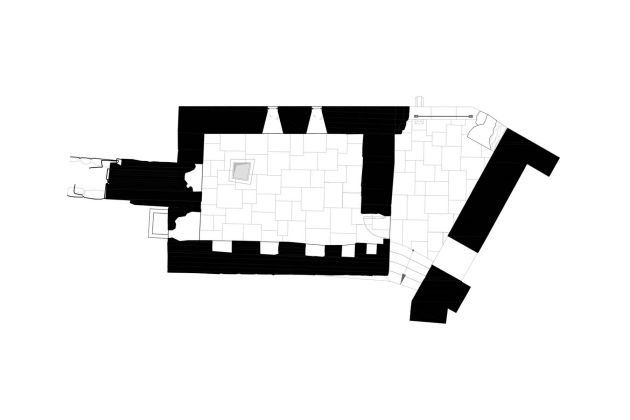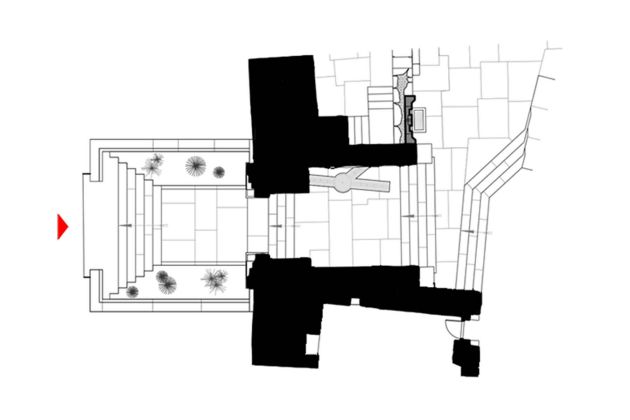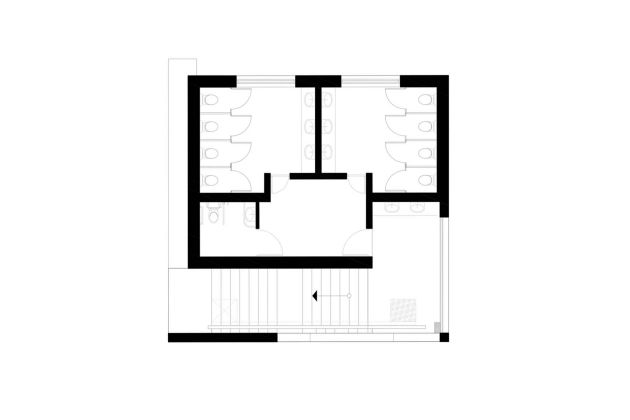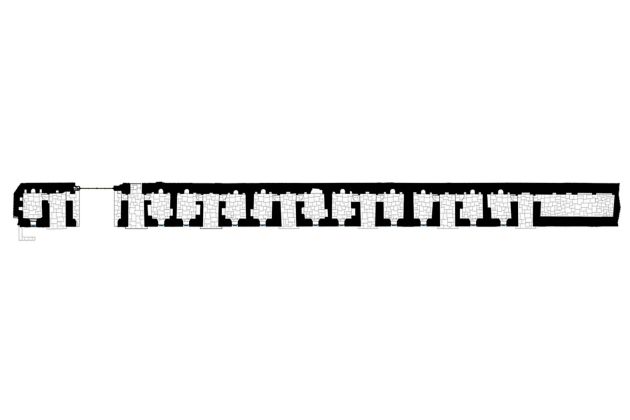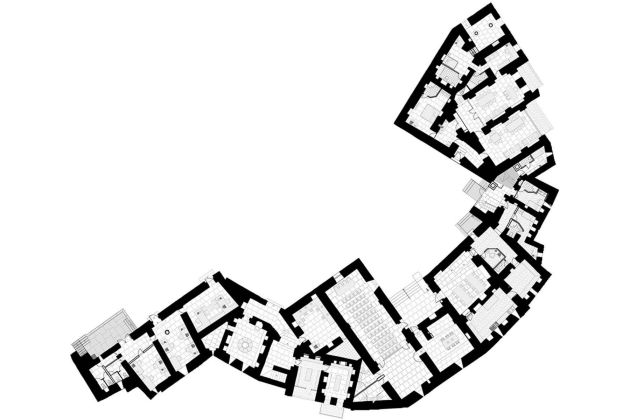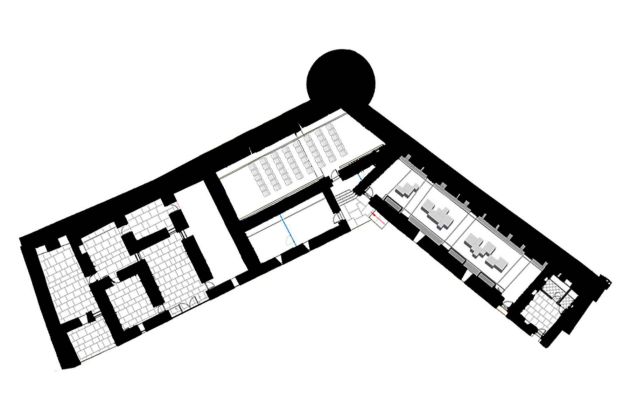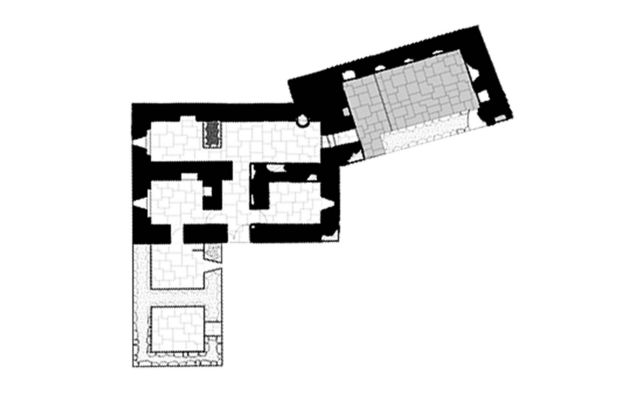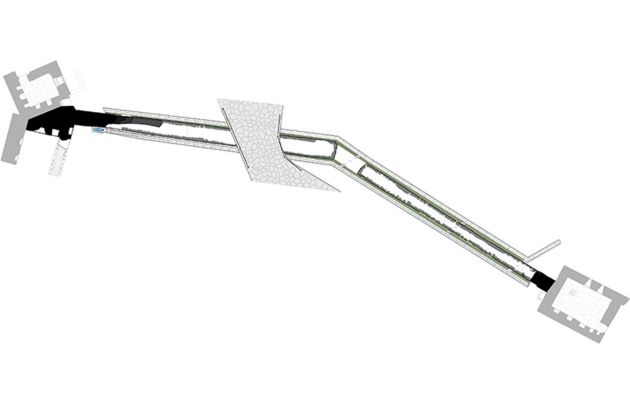Residential cells of the Tatev monastery
Residential cells are located at the north-eastern wall of the Tatev monastery complex and adjoin along its entire length. According to historical sources, they were built during the reign of Bishop Zakariy, in the second half of the 7th century, as residential premises for pilgrims and monks of the Tatev monastery. Almost 100 years later, in the second half of the 18th century, Bishop Abraham repaired the cells along with the monastery wall.
The residential cells are 76 m long and 5.65 m wide, adjacent to the north-eastern wall of the monastery and built on a slope. In 1931, the structure was badly damaged and most of it collapsed as a result of an earthquake. It was cleared in excavations in the 1980s, but since then no work has been carried out to strengthen the cells. In 2015, cleaning work was again carried out, building measurements were taken and a conclusion on the technical condition was drawn up, and in 2016 a restoration project was developed.
The restoration project addreses the following
- dismantling of the weakened stones of the monastery wall and new masonry
- considering that the stones of the surviving longitudinal and transverse walls of residential cells are extremely layered, dilapidated and unstable, it was considered expedient to dismantle them and re-erect them on reliable foundations. The tops of the walls and vaults will be in new stone, while maintaining the traditional masonry
- implementation of basalt blind areas along the perimeter of the building to protect the foundation and walls from moisture
- provision of electricity, heating and water supply to the restored residential cells, which will allow them to be used for their intended purpose by decision of the owner























